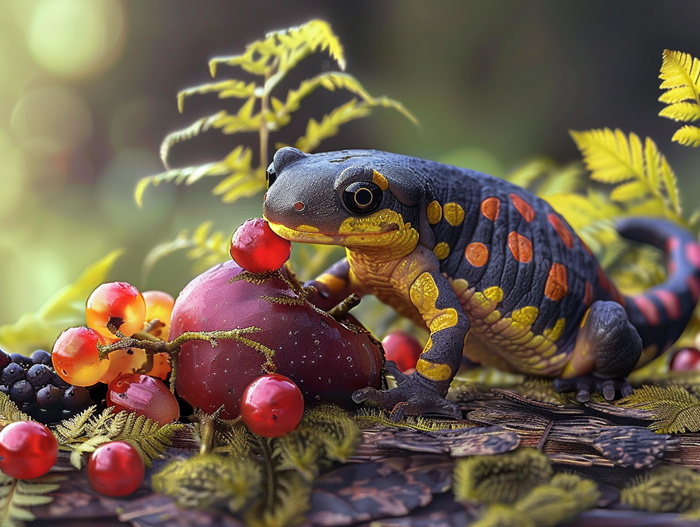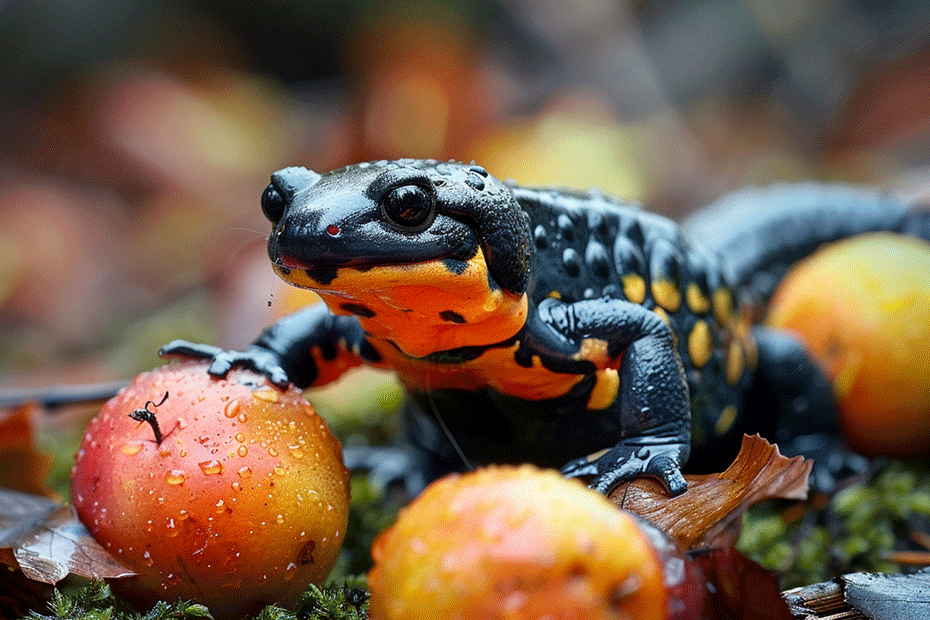Are you curious about whether salamanders have a taste for fruit? While these amphibians are known for their diverse diet, you might be surprised to learn about their relationship with fruits. In this text, we’ll investigate into the intriguing world of salamanders and their dietary habits. Stay tuned to uncover the truth about whether salamanders indulge in fruits as part of their meals.
Salamanders are fascinating creatures that exhibit a wide range of feeding behaviors. From insects to small vertebrates, their diet is quite diverse. But what about fruits? Do salamanders find them palatable, or do they stick to other food sources? Join us as we explore the intriguing question of whether salamanders include fruits in their diet. Let’s uncover the facts behind this lesser-known aspect of salamander feeding habits.
Key Takeaways
- Salamanders have a diverse diet that includes insects, small vertebrates, and occasionally fruits.
- Factors such as habitat, season, and prey availability influence a salamander’s dietary habits.
- Observing salamanders near water sources during the night or early morning can provide insights into their feeding behaviors.
- Understanding salamander behavior, habitat preferences, and scat analysis can help identify their fruit consumption habits in the wild.
Do Salamanders Eat Fruit?

Understanding Salamanders
- Amphibians with moist skin and typically lay eggs in water.
- Known for their diverse diet, including insects and small vertebrates.
- Salamanders are carnivorous and opportunistic feeders.
Diet of Salamanders
- Their diet varies based on species, habitat, and availability.
- Consume insects, worms, small fish, and even smaller salamanders.
- Fruit consumption is less common, but certain species may eat fruits opportunistically.
- Predominantly carnivorous, with a diet rich in proteins.
- Include invertebrates like insects, spiders, and worms.
- Opportunistic feeders that may occasionally consume plant matter like fruits.
Remember, while salamanders mainly feast on insects and small vertebrates, some may veer towards fruits now and then based on availability.
Factors that Influence Salamander’s Diet

Habitat
- Salamanders’ habitat plays a crucial role in determining their diet.
- Various species thrive in different environments, influencing the availability of food sources.
- Terrestrial salamanders are more likely to encounter fruits compared to aquatic species.
Season
- The time of year affects salamanders’ diet patterns.
- Warmer months usually offer more insect prey, while colder seasons may limit food availability.
- Some salamanders may rely more on fruits during seasons with reduced insect numbers.
- Proximity to suitable prey influences a salamander’s diet.
- Changes in prey populations can lead to variations in salamander feeding habits.
- Salamanders adapt their diet based on the abundance of insects, vertebrates, or fruits in their surroundings.
By understanding these factors, you gain insights into the dynamic nature of a salamander’s diet.
Observing Salamanders in the Wild

Best Practices for Observation
- Choose the Right Time: Salamanders are most active during the night or early morning, making these the optimal times for observations.
- Search Near Water Sources: Salamanders are often found near water bodies like ponds, streams, or wetlands, making these areas ideal for spotting them.
- Be Patient and Quiet: Salamanders are shy creatures, so maintaining a quiet demeanor and being patient increases your chances of observing their natural behaviors.
- Use a Flashlight: Since salamanders are more active during low-light conditions, a flashlight can help illuminate your surroundings for better visibility.
- Fruit Residue: Look for residual pieces or parts of fruits near areas where salamanders have been spotted, indicating their consumption.
- Scat Analysis: Examining the scat of salamanders can provide insights into their diet, including potential fruit remnants.
- Observing Behavior: Watch for behaviors like biting into fruits or consuming pulp, giving direct evidence of salamanders eating fruits.
- Track Habitat: Understanding the habitat preferences of salamanders can help predict where they may encounter fruit sources in the wild.
Understanding these observational practices and cues will enhance your ability to identify if salamanders in the wild consume fruits regularly.
Conclusion
Observing salamanders in their natural habitat and understanding their dietary habits, including the potential consumption of fruits, can be a fascinating try. By employing effective observation techniques, such as searching near water sources, analyzing scat, and observing behaviors like consuming fruits, you can gain valuable insights into salamanders’ dietary preferences. These practices not only contribute to the broader understanding of salamander behavior but also offer a glimpse into the intricate relationship between these amphibians and their environment. Through patient and attentive observation, you can uncover valuable information about salamanders’ dietary choices and potentially contribute to the existing body of knowledge in herpetology. Discover the area of salamanders with curiosity and dedication, and you may discover new insights into these fascinating creatures.

Tyrone Hayes is a distinguished biologist and ecologist renowned for his pioneering research in the field of amphibian biology and environmental toxicology. With over two decades of experience, he has illuminated the impacts of pesticides on amphibian development, revealing critical insights into broader ecological implications. Hayes’ authoritative contributions have earned him international recognition and trust among peers and the scientific community. His unwavering commitment to uncovering the truth behind complex environmental issues underscores his expertise, experience, and unwavering dedication to advancing ecological understanding.
